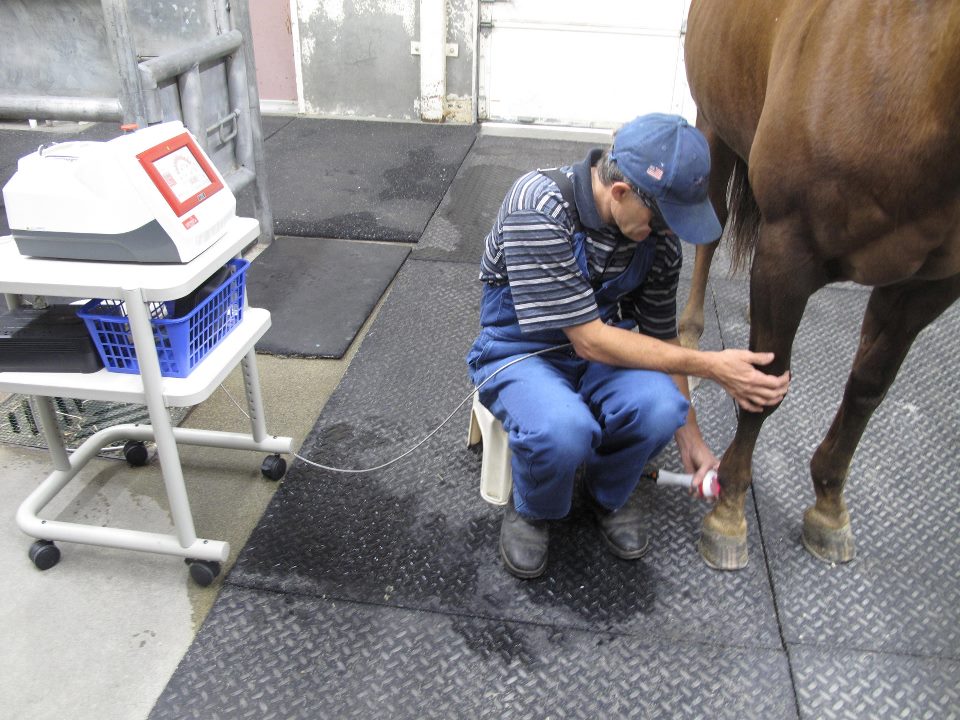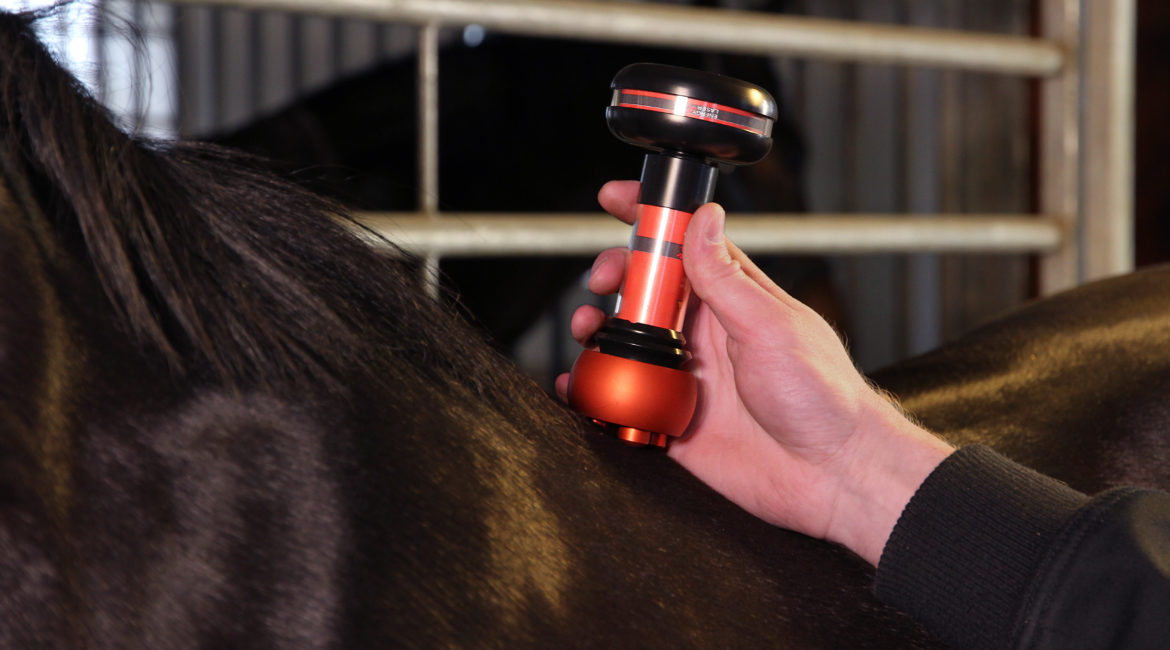Laser Therapy in Equine Therapy: A Modern Technique to Improving Horse Wellness
Laser therapy has actually emerged as a pivotal strategy in equine treatment, using concentrated light energy to cultivate cellular repair and accelerate recovery from a variety of conditions. This non-invasive strategy is especially reliable in managing bone and joint injuries, injuries, and inflammatory conditions, substantially enhancing general steed health. By promoting mitochondrial task and increasing ATP manufacturing, laser treatment not only enhances blood circulation but likewise gives substantial pain alleviation. As this innovative therapy remains to acquire grip, it opens up interesting opportunities for addressing chronic problems like joint inflammation and unguis problems, signaling a transformative shift in veterinary care. What makes this technique specifically compelling?
Understanding Laser Treatment
Laser treatment, a non-invasive treatment modality, has gained significant traction in equine medication because of its efficacy in promoting recovery and discomfort relief. This advanced healing strategy utilizes concentrated light power to permeate tissues, fostering cellular repair and regeneration. The underlying system includes the stimulation of mobile mitochondria, bring about boosted production of adenosine triphosphate (ATP), the power currency of cells. Enhanced ATP degrees speed up cells fixing processes and reduce swelling, making laser therapy particularly reliable for dealing with musculoskeletal injuries, injuries, and other inflammatory problems in equines.
There are a number of kinds of lasers used in equine treatment, each with certain wavelengths and power outcomes tailored to different therapeutic demands. Low-level laser therapy (LLLT), also called chilly laser therapy, uses reduced power levels to boost cell function without causing thermal damages. High-intensity laser therapy (HANDLE), in comparison, utilizes greater power levels to attain much deeper tissue penetration and more considerable healing impacts.
Veterinarians make use of numerous laser devices and techniques depending upon the problem being dealt with and the wanted depth of tissue penetration. Appropriate training and competence are crucial for making sure the secure and reliable application of laser therapy, thereby optimizing its restorative capacity while lessening threats.
Advantages for Horse Health And Wellness
With a strong understanding of exactly how laser treatment works, it is vital to explore its countless benefits for equine health. By promoting mobile function, laser treatment promotes faster injury healing and aids in the regrowth of broken cells.
Additionally, laser treatment has actually been shown to improve circulation, thereby improving blood flow to affected locations. Improved circulation guarantees that essential nutrients and oxygen are delivered more effectively, helping with the recovery process. Additionally, laser treatment's anti-inflammatory effects aid in reducing swelling and discomfort, which is important for the total health of the steed.
Discomfort administration is an additional significant benefit. By releasing endorphins and blocking discomfort signals, laser therapy gives reliable, non-invasive remedy for both acute and chronic pain. This can add to boosted flexibility and quality of life for the animal.
Lastly, laser treatment is a non-invasive treatment choice, minimizing the threat of complications connected with more invasive treatments. Its versatility and effectiveness make it a very useful device in modern-day horse vet medication.
Typical Conditions Treated

One more widespread condition treated with laser treatment is joint inflammation. Equines experiencing both severe and chronic joint inflammation take advantage of the anti-inflammatory effects of laser therapy, which aids to ease pain and boost joint function. Furthermore, laser treatment is used in the administration of injuries. Whether managing surgical cuts or stressful injuries, the modality promotes much faster cells repair and decreases the danger of infection.
Horse respiratory conditions, such as frequent respiratory tract blockage (RAO), also respond positively to laser therapy. The anti-inflammatory residential or commercial properties of the treatment aid in lowering airway inflammation, thus enhancing breathing feature. Moreover, laser therapy is beneficial in dealing with unguis issues, including laminitis and abscesses. By enhancing circulation and reducing discomfort, it sustains quicker recovery.
Treatment and Safety
Carrying out laser treatment in a knockout post equine therapy includes a careful procedure to make certain both efficiency and safety and security. Equine Therapy. The procedure begins with a thorough veterinary evaluation to establish the suitability of laser therapy for the horse's specific problem. As soon as considered ideal, the therapy area is prepared by cleaning and, if necessary, clipping the hair to improve laser penetration
The professional must choose the correct kind of laser, commonly a low-level laser (LLLT) or a high-power laser (HPL), depending on the condition being dealt with. The laser tool is after that calibrated to the appropriate wavelength, power, and period settings. Throughout the application, the professional relocates the laser over the targeted location in an organized fashion, guaranteeing constant and even direct exposure.
Safety and security protocols are purely complied with, including the usage of safety eyeglasses for both the practitioner and the equine. Additionally, it is critical to keep track of the horse Find Out More for any type of indications of pain or damaging reactions throughout the procedure. Post-treatment, the horse is often provided a period of rest to allow the restorative effects to manifest.

Future of Horse Laser Therapy
As advancements in veterinary medicine remain to unfold, the future of equine laser treatment holds substantial pledge. Emerging innovations and deeper scientific insights are established to improve and increase the applications of laser treatment for equines. One of one of the most expected advancements is the integration of advanced imaging strategies that enable much more precise targeting of damaged cells, thus enhancing healing results. In addition, the development of mobile and straightforward laser gadgets is likely to make this therapy a lot more available to a wider variety of professionals and equine proprietors.
Furthermore, continuous research study right into the molecular and cellular devices of laser treatment will likely generate enhanced protocols tailored to details conditions, enhancing effectiveness and decreasing therapy times. Customized therapy strategies based upon hereditary and biochemical markers could come true, making certain that each equine gets one of the most ideal and reliable care.
Moreover, regulative developments and standardization of procedures will certainly improve the credibility and dependability of special info laser treatment in equine method. Equine Therapy. As these developments remain to arise, equine laser treatment is positioned to come to be an indispensable element of veterinary treatment, offering enhanced recovery and enhanced high quality of life for horses globally
Verdict

Comments on “Discovering the Holistic Technique of Equine Therapy for Personal Development”